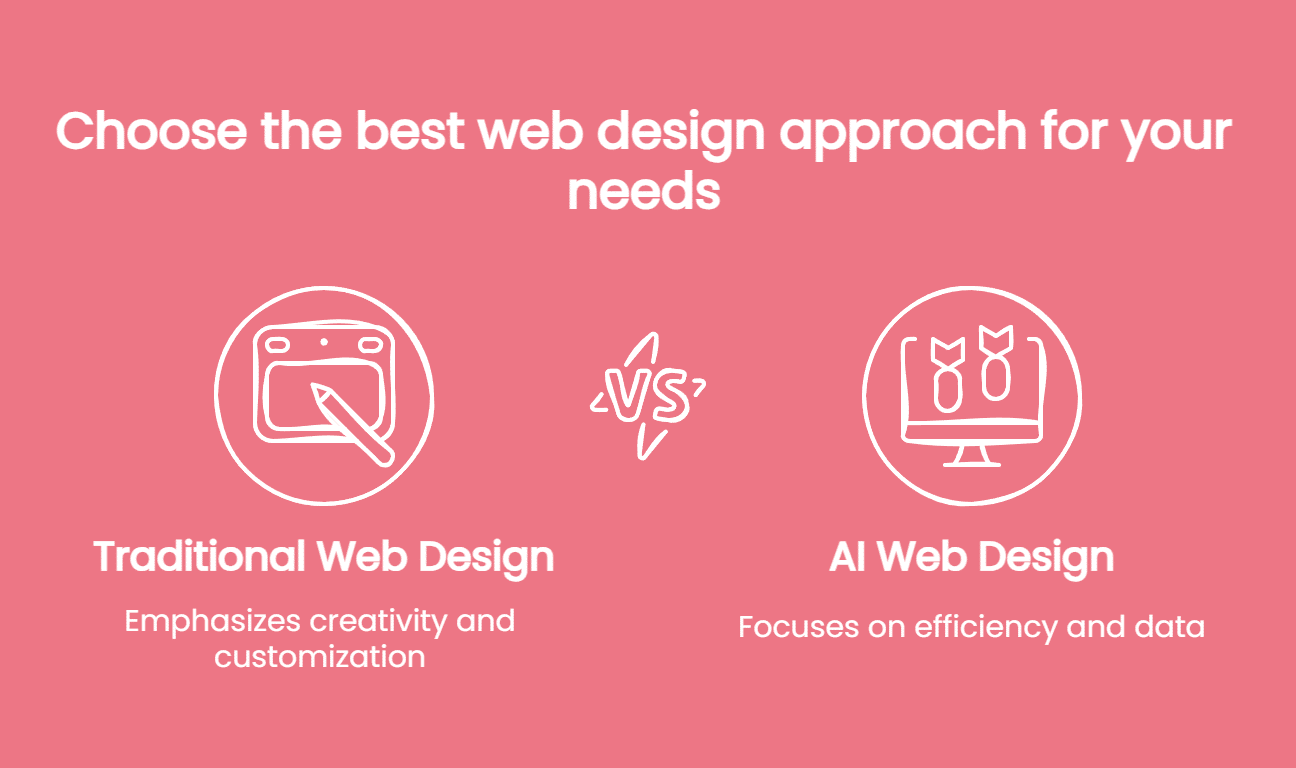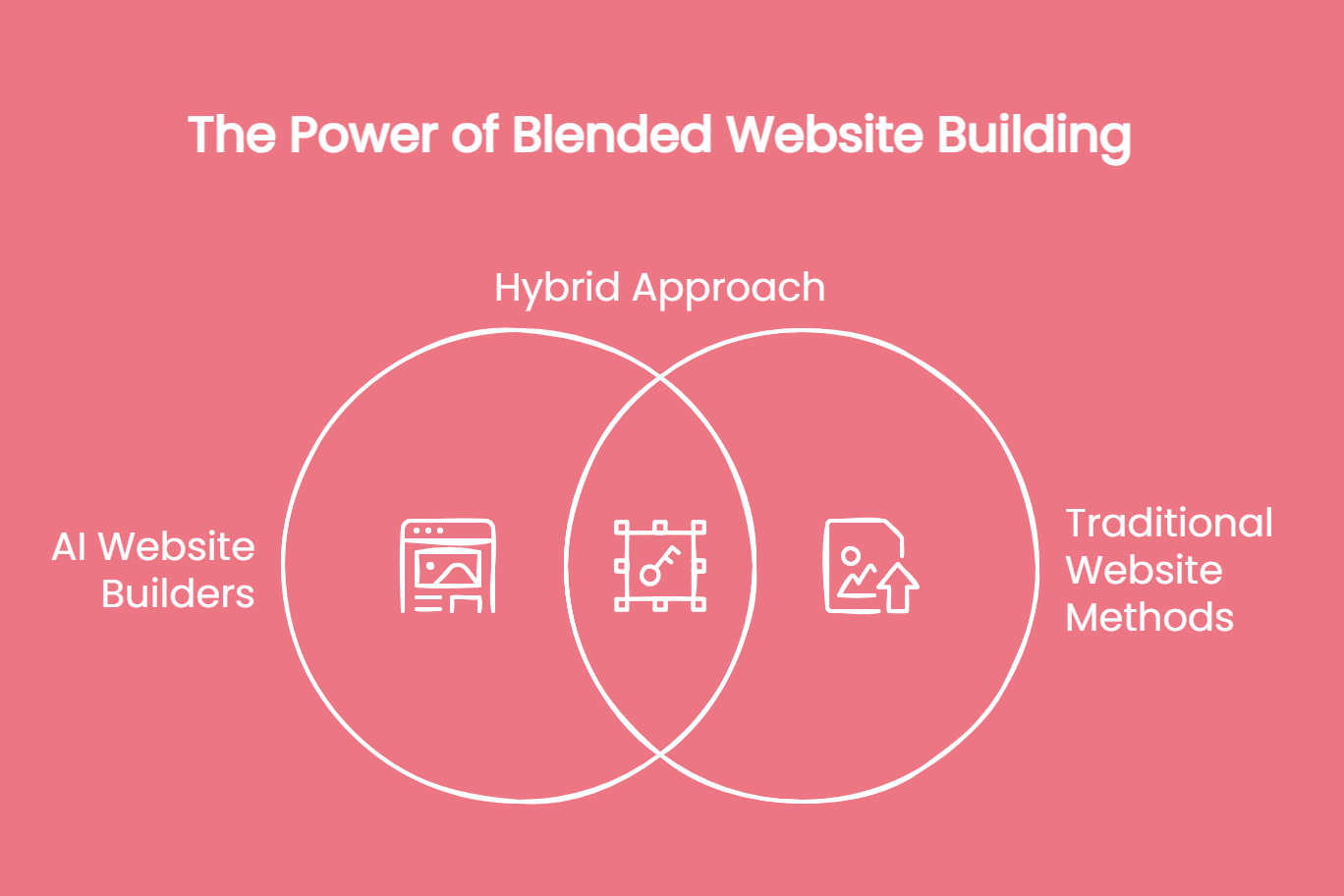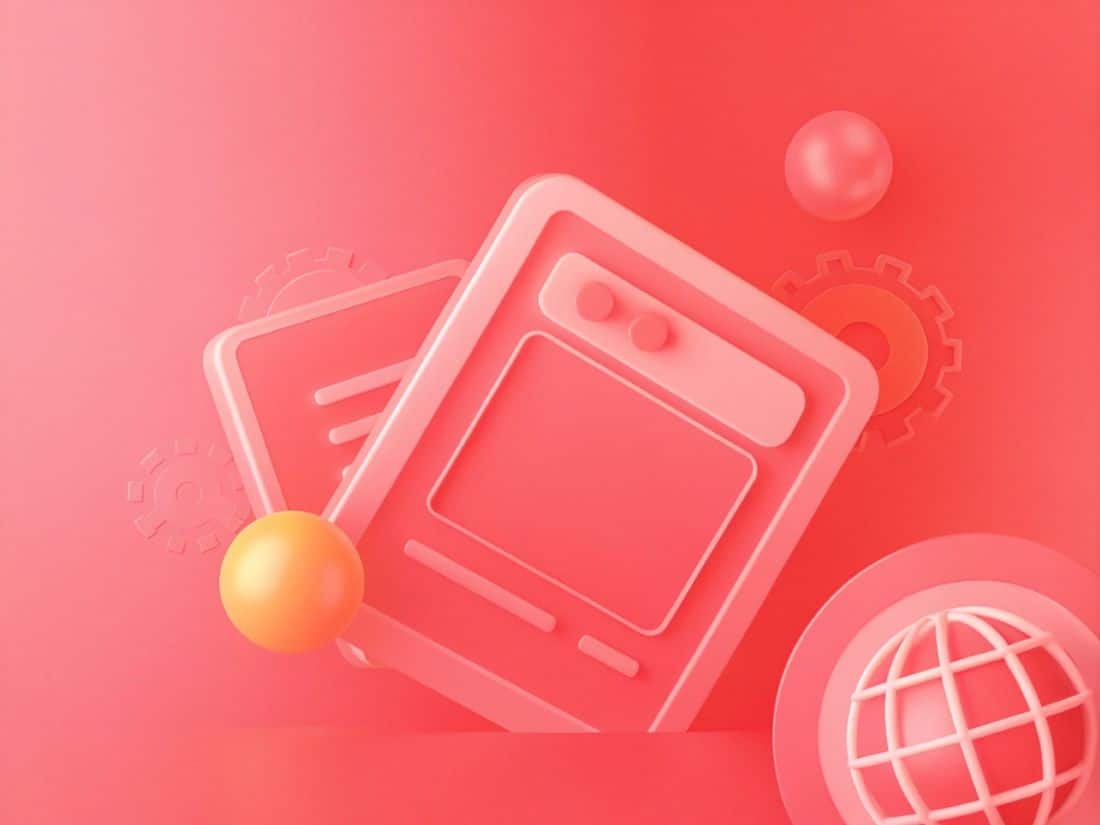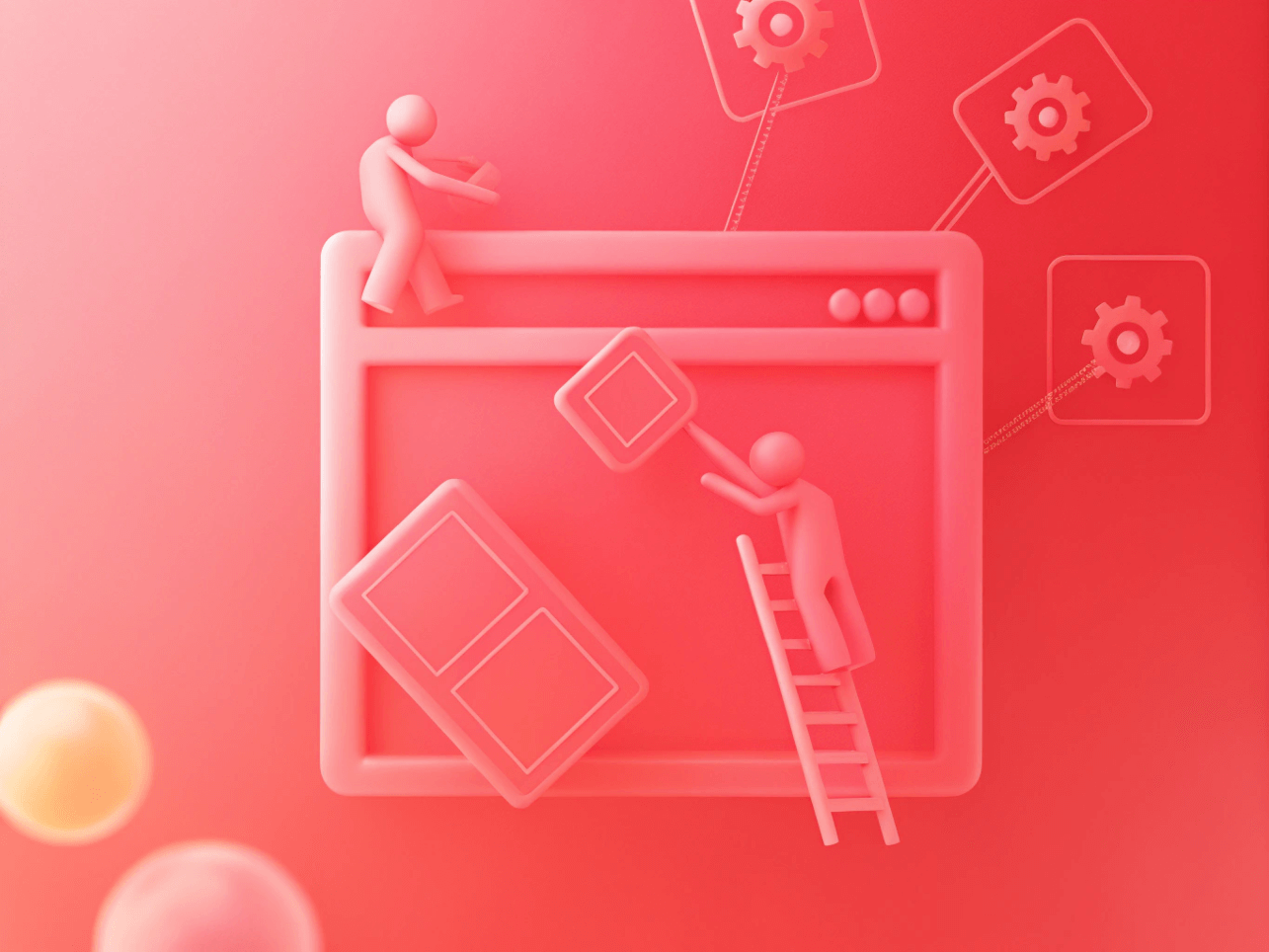TL;DR: Australian businesses comparing AI website builders with traditional agencies need to look beyond the upfront price. AI delivers speed and lower costs, while agencies provide stronger long-term returns through strategy, customisation, and performance.
At a glance:
- AI website builders cost around 80–90% less upfront.
- Traditional designs convert up to 3x better for complex business needs.
- AI sites can launch in 24–48 hours, and agencies take 4–12 weeks.
- Professional designs last 3–5 years, compared to 1–2 years for AI sites.
- Hybrid approaches often provide the best ROI for SMEs.
AI design tools are rewriting the rules of web development in Australia.
For business owners, the choice is no longer just about finding the right designer or agency. The question now is whether an AI-driven builder or a traditional web design team will deliver the better return on investment. We’ll break down how AI builders and traditional agencies stack up on cost, performance, and longevity, so you can see which path makes more sense for your business.
AI vs Traditional Web Design: What’s the Difference?

Before comparing ROI, it helps to understand what each approach actually involves.
AI Website Builders
AI website builders use algorithms to generate layouts, content, and design elements based on user inputs such as business type, branding, and style preferences. They’ve become popular for launching websites quickly without requiring technical skills. Commonly used platforms include:
- Wix
- Squarespace
- Hostinger
- GoDaddy
- Elementor
Some of these, like Wix and Squarespace, began as traditional drag-and-drop builders and later integrated AI tools to automate design and content creation.
Traditional Web Design
Traditional web design involves working with professional designers and developers to create a website tailored to a business’s needs. This comprehensive web design and development approach can include freelancers, boutique studios, or full-service agencies. The process typically covers brand alignment, user experience, visual design, and custom functionality, resulting in a solution built specifically for the client.
Key Differences:
- Cost – subscription vs upfront investment.
- Speed – quick launch vs longer timelines.
- Customisation and Quality – standard layouts vs tailored solutions.
- Performance and Longevity – shorter lifecycle vs longer-lasting builds.
1. Cost
AI Website Builders
AI platforms follow a subscription model, making them one of the cheapest ways to set up a site. You only need to pay a recurring monthly or annual fee, which can increase as you scale and require more advanced features such as e-commerce or analytics. This affordability makes them a common choice for startups or small businesses that want to avoid large upfront costs.
Typical price ranges:
- Entry-level: from AU$5/month
- Mid-range platforms: AU$14–$89/month
- Advanced plans with e-commerce and add-ons: AU$100+/month
Traditional Web Design
Traditional web design usually requires a one-off investment, with costs varying based on the size and complexity of the project. Smaller sites are priced at the lower end, while more complex builds with custom features sit much higher. You own the website outright once completed, though it’s important to also budget for hosting, maintenance, and updates.
Typical price tiers:
- Basic site (5–10 pages): AU$2,000–$5,000
- Standard site (10–20 pages): AU$5,000–$10,000
- Complex or custom builds: AU$10,000–$50,000+
2. Speed
AI Website Builders
One of the biggest appeals of AI platforms is how quickly they can launch a site. Once you enter your business details and preferences, the system can generate a draft within minutes. From there, it usually only takes a few hours to a couple of days to refine the design, add content, and go live. This makes AI tools attractive when you need an immediate online presence.
Typical timelines:
- Initial generation: minutes
- Refinement and setup: hours to a few days
- Average time to launch: 1–3 days
Traditional Web Design
Traditional projects involve multiple stages, including consultation, design concepts, revisions, development, and testing. Each step takes time, and delays can also come from waiting on client feedback or content. As a result, professional websites take longer to complete but follow a structured process.
Typical timelines:
- Discovery and planning: 1–2 weeks
- Design and revisions: 2–4 weeks
- Development and testing: 4–8 weeks
- Average time to launch: 8–16 weeks
3. Customisation and Quality
AI Website Builders
AI platforms provide ready-made layouts that you can adjust to fit your brand. They typically allow changes to colours, fonts, images, and some structural elements. More advanced platforms may let you add custom code, but there are limits on how far you can push the design. For most small businesses, this level of flexibility is enough to create a clean, functional website, but it may feel restrictive for complex needs.
Customisation scope:
- Easy changes to text, images, colours, and fonts
- Pre-set layouts and sections to choose from
- Limited capacity for advanced features or unique functions
Traditional Web Design
Working with designers and developers gives you full freedom to shape the site around your business goals. Everything from layout to user journey can be planned from scratch, and advanced functionality—such as booking systems, calculators, or custom integrations—can be built in. This approach also makes it easier to weave brand storytelling and design details into the site.
Customisation scope:
- Complete flexibility in design and layout
- Ability to build complex or industry-specific features
- Stronger alignment with brand identity and messaging
4. Performance and Longevity
AI Website Builders
AI-generated sites are generally reliable for simple business needs, with decent page speed and mobile responsiveness. However, they often rely on standard frameworks and shared infrastructure, which can limit performance as traffic grows. They also tend to have a shorter lifespan, since designs and features may feel outdated or restrictive within a couple of years, prompting a full rebuild.
Typical outcomes:
- Average lifespan: 1–2 years
- Performance suited to small or low-traffic sites
- Limited scalability for complex or growing businesses
Traditional Web Design
Custom-built sites are designed to be scalable and adaptable over time. They are more likely to achieve higher performance scores across areas like interactivity, stability, and SEO. Because they can be updated and extended with new features, they often remain relevant for several years before requiring a major website redesign.
Typical outcomes:
- Average lifespan: 3–5 years
- Built to scale as traffic and functionality demands increase
- Stronger performance on search and usability metrics
Which Delivers Better ROI?
When it comes to return on investment, there isn’t a single winner—what matters is how well each option aligns with your goals.
AI website builders deliver the strongest ROI for businesses that need a professional online presence quickly and at minimal cost. Startups, sole traders, and small service providers often see good value here, especially when the priority is testing the market or keeping overheads low.
Traditional web design, on the other hand, produces better returns for businesses with more complex requirements. Professional services, B2B companies, and established brands benefit from the customisation, performance, and scalability that come with a bespoke build. While the upfront investment is higher, the site usually lasts longer and is better positioned to generate leads or support long-term growth.
For many Australian SMEs, a hybrid approach can strike the right balance. Starting with an AI-built site allows you to get online quickly, while later investing in custom design ensures you have the flexibility and functionality to grow.
Why the Best ROI Comes from a Hybrid Approach

AI website builders are everywhere, but relying on them alone won’t give most businesses the returns they’re looking for. At the same time, sticking only to traditional methods risks falling behind competitors who are moving faster with new tools. The strongest ROI often comes from blending the two.
A hybrid approach uses AI for what it does best—speed, automation, and efficiency—while professional designers and developers add the strategic thinking, creativity, and customisation that AI can’t replicate. The result is a website that launches quickly, adapts over time, and delivers real business outcomes.
When choosing an agency, businesses should look for one that:
- Understands AI tools and knows how to apply them effectively.
- Brings strategic insight, ensuring design decisions are tied to growth goals.
- Offers flexibility, with the ability to combine automation and custom development.
- Keeps up with industry shifts, so websites remain competitive long after launch.
By working with a partner who blends AI efficiency with human expertise, businesses stay ahead of the curve while making sure their website delivers lasting value.
Staying Ahead in the New Web Design Landscape
The rise of AI has reshaped how websites are built, but the real advantage comes from knowing how to combine technology with expertise. Businesses that embrace this balance can achieve stronger ROI, faster results, and long-term value.
At Spark, we keep our clients ahead by blending AI innovation with proven design strategy. It means every website we deliver is built not just to launch, but to last.




